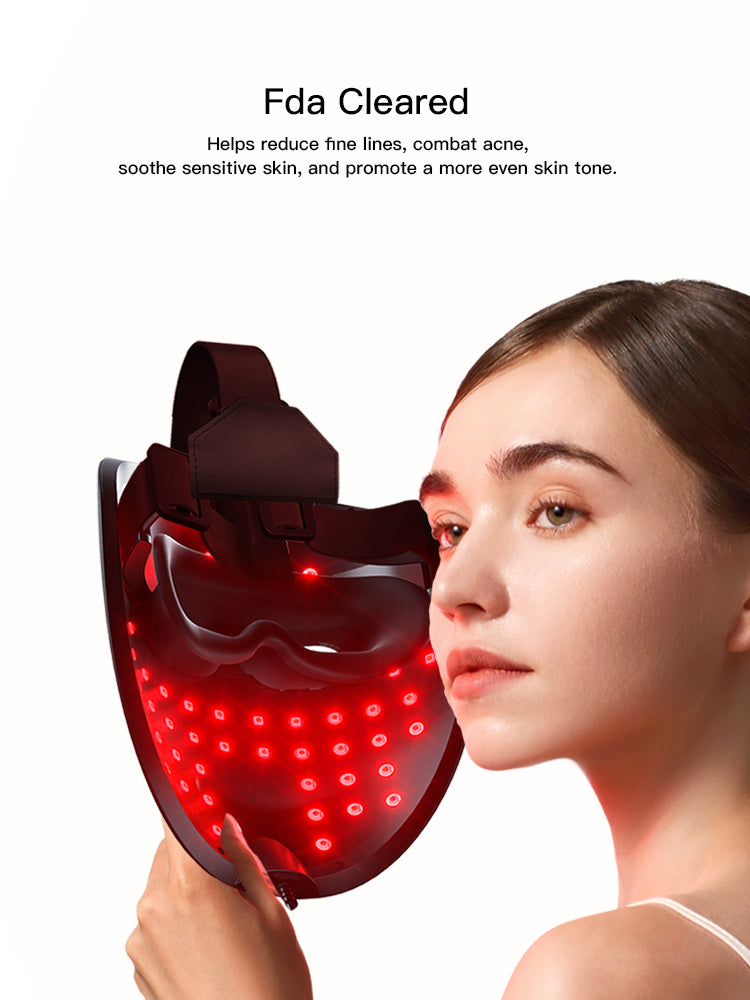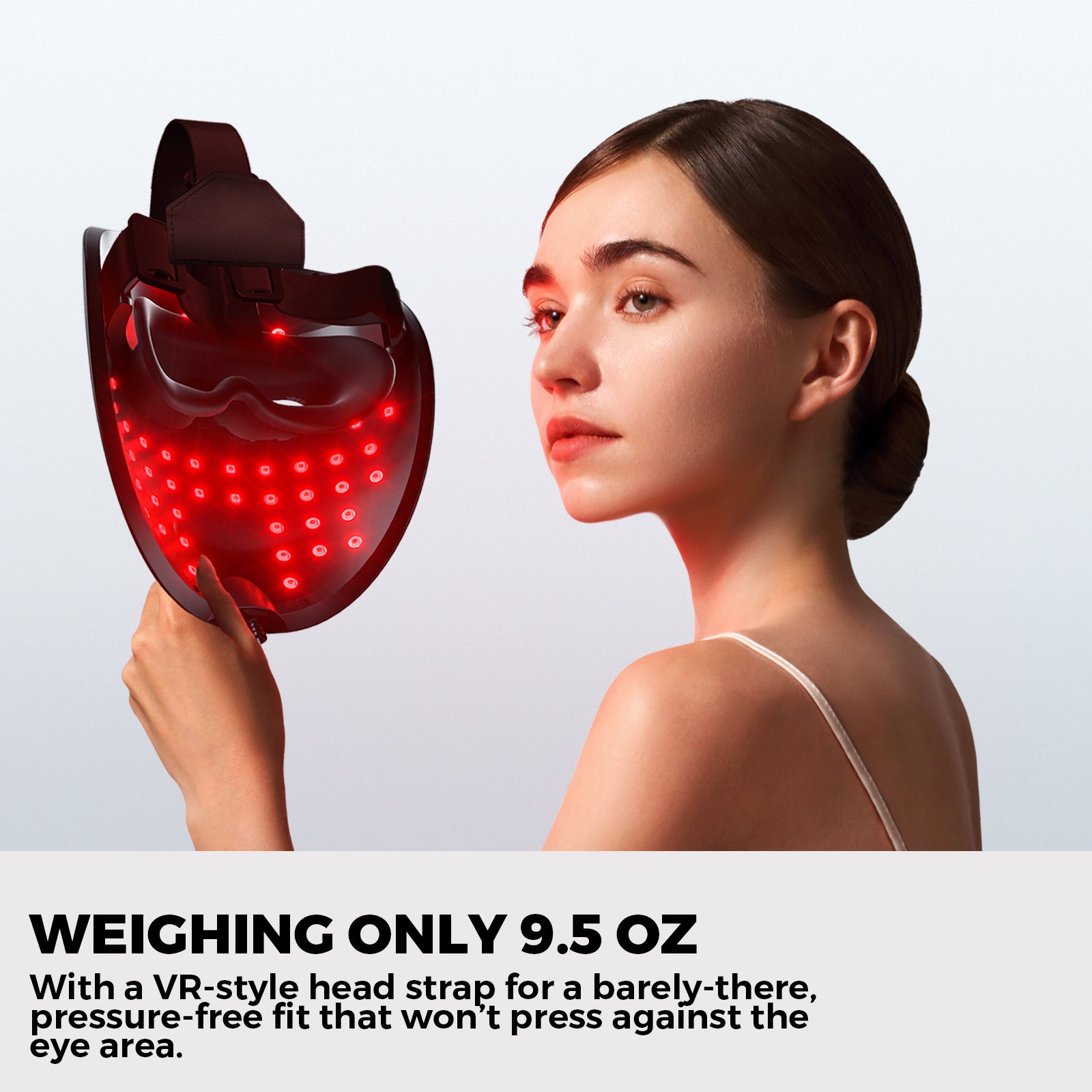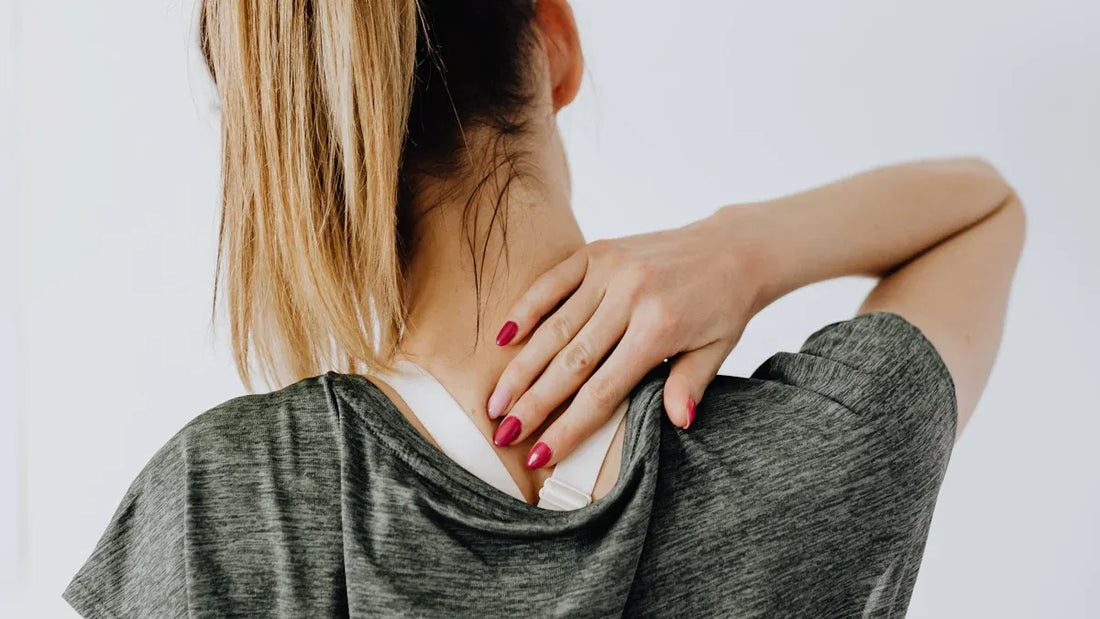
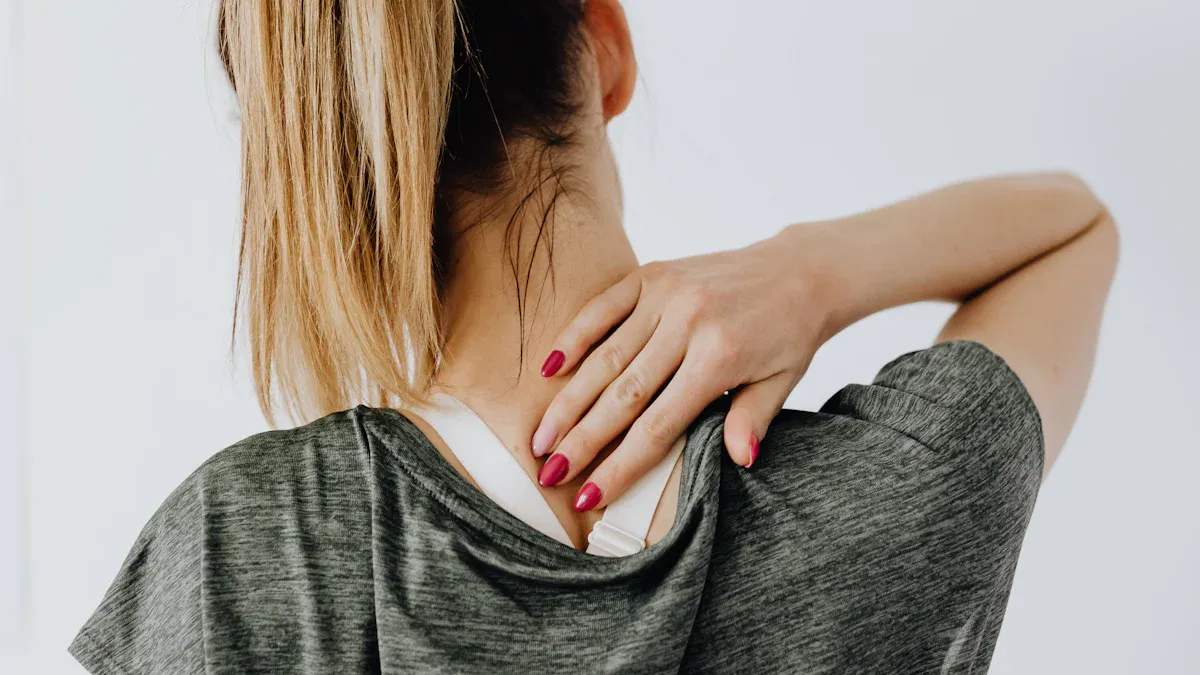
You may ask if people with chronic pain feel better using red light therapy bags. Many people do notice some changes. Some say red light therapy helps them feel better. Others say they do not feel any different. Look at these numbers from new surveys:
| Pain Relief Level | Percentage of Patients |
|---|---|
| Slight Improvement | 28.6% |
| Moderate Improvement | 34.9% |
| No Change (Placebo) | 43.1% |
Red light therapy uses soft red and infrared light. You can use devices or special bags at home. People use red light therapy for back pain, arthritis, and old injuries. You can read stories about quick results and slow changes. People also share tips to help red light therapy work. Everyone’s story is different. You might feel hopeful or face some problems.
Key Takeaways
- Red light therapy bags help many people feel less pain. About 63.5% of users say they feel better. You need to use the therapy bags often to get good results. Using them regularly helps you more over time. Red light therapy is FDA-cleared. It is a non-invasive way to manage pain. It does not have the side effects that medicines do. People also say they sleep better and feel happier. These benefits come with pain relief. You should change your therapy routine to fit your needs. Talk to a healthcare provider for the best results.
Do Red Light Therapy Bags Help?
Real Results From Real Patients
You might ask if red light therapy bags help with pain. Many people talk about their experiences online. Some say they feel almost no pain after a few sessions. Others say they can move better and feel less stiff. A few people start doing things they enjoy again, like playing golf, after some months.
Here is a table that shows how long it takes for some people to see changes:
| User Experience | Timeline for Results |
|---|---|
| Nearly pain-free | After a short time |
| Back on the golf course | After a couple of months |
| Tears of joy | After 4th or 5th session |
| Neuropathy progression stopped | In a few weeks |
Some people notice other good changes too. They say their digestion gets better and they have less bloating. Some say their PMS symptoms are not as bad. The therapy bags are simple to use and can treat many body parts at once. You do not need to go to a clinic for hours. You can use the bags at home while you rest.
Red light therapy is special because it is FDA-cleared for pain and muscle spasms. It helps by lowering swelling and helping your body fix tissues. You may find it safer and cheaper than other treatments, like low-level laser therapy.
Common Pain Conditions
People use red light therapy bags for many kinds of pain. These are the most common conditions you will see:
- Arthritis and joint pain
- Tendonitis and muscle strains
- Chronic fatigue and fibromyalgia
- Neuropathy-related inflammation
Let’s see how red light therapy helps with these problems:
| Condition | Findings |
|---|---|
| Arthritis | Less pain, less morning stiffness, stronger grip in rheumatoid arthritis patients. |
| Fibromyalgia | Lower pain, less fatigue, better sleep quality. |
| Back Pain | Less pain, better movement, improved quality of life for chronic low back pain patients. |
Red light therapy can help with pain and muscle spasms. You may feel more flexible and less stiff. Studies show people with fibromyalgia and arthritis often feel much better. If you have these problems, these results may give you hope.
How Red Light Therapy Devices Work
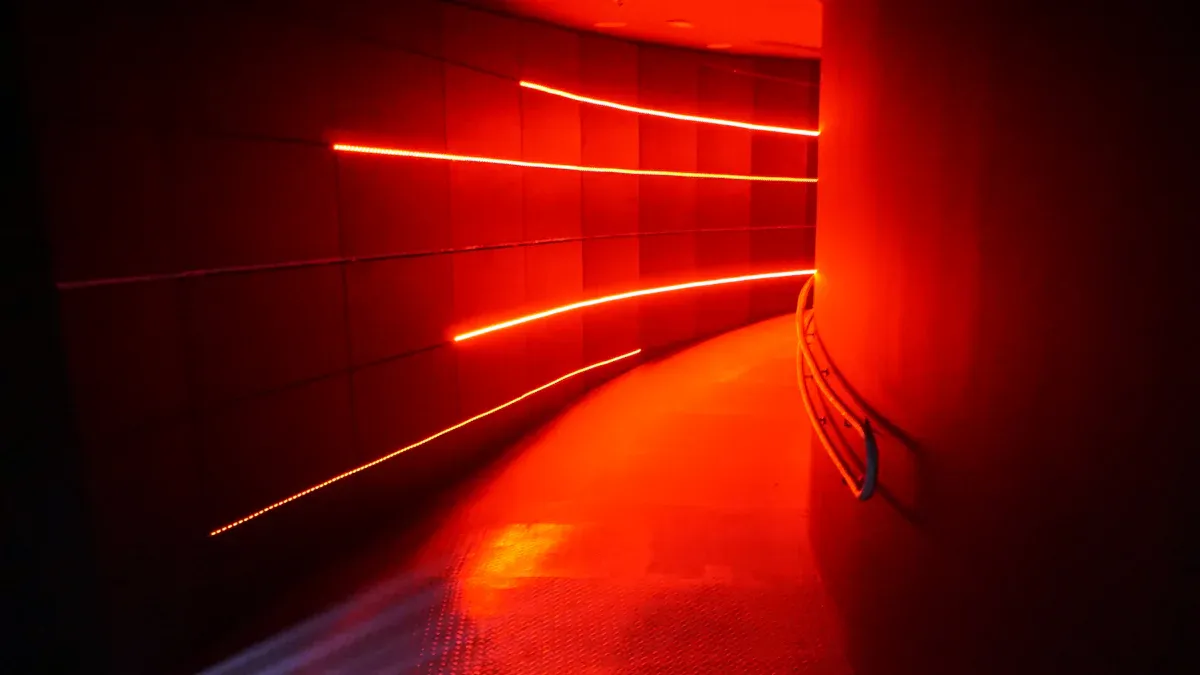
Science Behind Red Light Therapy
You might ask how red light therapy devices help pain. These devices shine special red and infrared light on your skin. The light goes deep and reaches muscles, nerves, and bones. When you use these devices, the light gives your cells more energy. This happens because it helps your cells make more ATP. Your body can heal faster and swelling goes down.
Did you know? Red light therapy devices can reach up to 7 centimeters under your skin. This means they can help sore spots that creams or patches cannot reach.
Red light therapy also helps blood move better. More blood brings oxygen and nutrients to painful spots. Some studies say these devices make pain feel less strong. They also help your body fight swelling. For example, scientists found red light therapy lowers chemicals that make pain worse. You may see less swelling and stiffness after using these devices.
Here’s a quick look at what these devices do:
- Help cells grow back with light from 600 to 900 nanometers
- Give your cells more energy so you heal faster
- Lower swelling and pain by changing signals in your body
- Help your body make more serotonin and endorphins to boost your mood
Most research says red light therapy devices are safe. You might feel a little skin or eye discomfort. These side effects are mild and go away fast.
| Evidence Type | Description |
|---|---|
| Safety | Red light therapy is usually safe for chronic pain relief. |
| Side Effects | Small side effects can happen, like skin or eye discomfort. |
Why Chronic Pain Sufferers Use Them
You may wonder why many people use red light therapy devices for pain. These devices do not need needles or surgery. Many people say they feel less pain and swelling after a few uses. You can use these devices at home. This saves time and money.
People with back pain, arthritis, and old injuries often try these devices. Other treatments do not always help them. Clinical trials show these devices help with joint pain, movement, and swelling. For example, people with osteoarthritis had 50% less knee pain after ten days of use.
Here are some reasons you might choose red light therapy devices:
- You want fewer side effects than pills or shots
- You need a treatment that fits your busy life
- You hope for fast results and long-lasting help
- You want to avoid surgery or other hard treatments
Tip: If you have chronic pain, red light therapy devices may help you feel better without doctor visits or strong medicine.
Recent studies show mixed results, but many people still feel much better. You may move easier, feel less pain, and even feel happier. If you want a safe and simple way to manage pain, red light therapy devices might be a good choice.
User Experiences With Red Light Therapy Bags
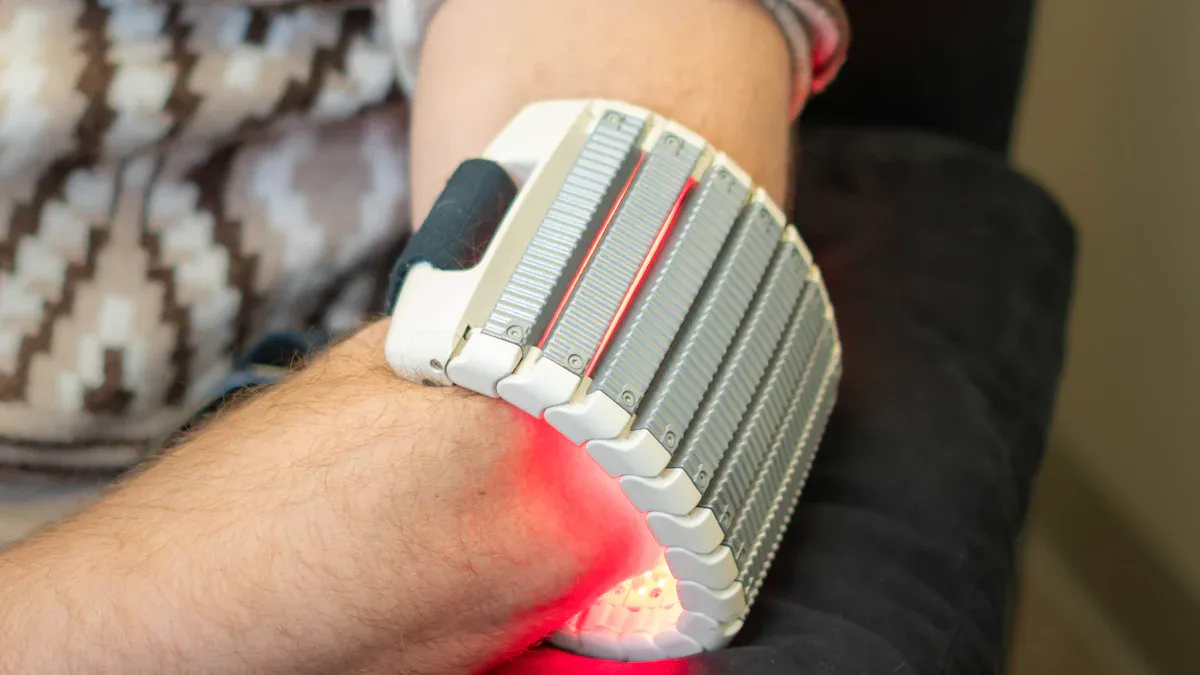
Positive Outcomes
You might wonder if red light therapy bags really help people with pain. Many users say they feel a big difference in their daily lives. One woman with fibromyalgia shared, “After just a few weeks, I could get out of bed without that deep ache in my legs.” People with arthritis often talk about less swelling and easier movement. If you have back pain, you may notice you can sit or stand longer without discomfort.
Here are some ways users describe their results:
- You may feel less pain in your lower back, knees, or shoulders.
- You might notice better blood flow, which helps your body heal.
- Many people say they use fewer pain pills after starting red light therapy bags.
- Some users say they feel safer using this therapy because it does not involve drugs.
A man with chronic knee pain said, “I tried everything for years. After using a red light therapy bag every night for two weeks, I finally slept through the night.” People often use these bags for 15-30 minutes a day. Some see results in a few days, while others need a few weeks. Most users say they feel more energy and can do more during the day.
“Red light therapy gave me my mornings back. I can walk my dog again,” shared a woman with arthritis.
Red light therapy works by sending light deep into your muscles and joints. This helps reduce swelling and tension. Your blood moves better, and your body repairs itself faster. Many people find this leads to less pain and a better quality of life.
Challenges and Limitations
Not everyone finds red light therapy bags perfect. Some users say they do not feel much change, even after several weeks. A man with old sports injuries said, “I used the bag every day for a month. My pain did not go away, but I felt a little less stiff.” You may need to use the therapy for a long time before you notice big changes.
Here are some common challenges:
- You might not see results right away. Some people need patience.
- The bags can feel bulky or hard to wrap around certain body parts.
- If you stop using the therapy, your pain may return.
- Some users say the cost is high, especially for medical-grade red light therapy.
A few people compare red light therapy bags to other treatments. Some say physical therapy or massage works better for them. Others like that red light therapy does not have side effects like medicine. If you have severe pain or chronic inflammation, you may need to use the bags along with other treatments.
Note: About 20% of adults in the U.S. live with chronic pain. Nearly 8% say their pain makes it hard to work or enjoy life. Red light therapy bags may help, but they are not a cure for everyone.
Unexpected Benefits
You may be surprised to learn that red light therapy bags can help with more than just pain. Some users talk about better sleep. One person said, “After my first red light therapy session, I had the best sleep in months.” Others notice they wake up feeling less groggy and more alert.
- A 2023 study found that red light therapy can help you sleep better.
- Some people say they feel happier and have more energy after using the bags.
- You may notice your skin looks healthier, or scars fade faster.
- A few users report faster muscle recovery after workouts or injuries.
Experts say that red light therapy may boost your mood because your cells work better. You might feel more motivated to move and exercise. If you struggle with muscle recovery, you could find that your body heals faster and you feel less sore.
“I started using red light therapy bags for back pain, but now I use them after every workout. My muscles recover so much faster,” shared a fitness coach.
Some people even say their digestion improves or their PMS symptoms get easier. While research is still growing, many users feel these extra benefits make red light therapy bags worth trying.
Tips For Getting The Most From Red Light Therapy
Consistency and Routine
If you want to get the best results from red light therapy, you need to stick with it. You might feel excited to start, but skipping sessions can slow your progress. Most users say you should use your therapy bag several times a week, especially at first. Some people use it every day for two or three weeks, then switch to three times a week once they feel better.
Here are some simple tips to help you build a routine:
- Set a reminder on your phone so you never forget a session.
- Try short sessions, about 10 minutes each, to avoid overdoing it.
- Use the therapy bag after exercise or stretching for better results.
- Drink water and eat healthy foods to help your body heal.
- Track your progress in a notebook or app.
“Consistency is more important than intensity. I started seeing results after using my bag every day for a month,” says one user.
You can target sore muscles or inflamed joints for relief. If you have a flare-up, try using the bag four or five times a week. For skin issues, three to five sessions weekly work well. Remember, patience pays off. You may notice changes in 10 to 12 weeks.
Advice From Real Users
People who use red light therapy bags often share helpful advice. You can learn from their experience and avoid common mistakes.
- Customize Your Program: Adjust the intensity and focus on the areas that hurt most.
- Keep Skin Bare: Don’t cover your body during treatment. This helps the light reach your skin.
- Find the Right Distance: Stay close enough to the device, but not too close. Most users say a few inches away works best.
- Choose Quality Devices: Pick a therapy bag or panel with the right wavelengths for your needs.
- Don’t Expect Instant Results: Give your body time to respond. Results take weeks, not days.
- Combine With Other Wellness Habits: Stretch, move, and rest well to boost your results.
- Protect Your Eyes: Wear eye protection if you use the device near your face.
- Ask for Help: Talk to a healthcare provider if you have questions or need advice.
| Mistake to Avoid | Why It Matters |
|---|---|
| Skipping sessions | Slows down your progress |
| Using wrong wavelengths | Less effective for pain relief |
| Overusing the device | Can cause skin discomfort |
| Expecting overnight results | May lead to disappointment |
Tip: Start with frequent sessions, then switch to maintenance once you feel better. You can always adjust your schedule if your symptoms change.
You have read about people like Michelle, David, Ethan, and Natalie. They used red light therapy bags for their pain. Many people say they feel less stiff. Some have fewer flare-ups and heal faster. Doctors say these devices are safe to use. They do not cut or poke your skin. You should talk to your doctor before you start. This is important if you take medicine. If you want to try red light therapy, begin with short sessions. Pick a device that fits your needs.
| Next Steps | Details |
|---|---|
| Try short sessions | Use for 10–20 minutes to avoid skin irritation |
| Protect your eyes | Wear eye protection with some devices |
| Choose wisely | Deep red for skin, near-infrared for joints and muscles |
You deserve to feel comfortable and hopeful. Look at your choices, ask questions, and take small steps to feel better.
FAQ
How long should you use a red light therapy bag each session?
Most people use the bag for 10 to 20 minutes per session. You can start with shorter times and see how your body feels. Always follow the instructions from your device.
Can you use red light therapy bags every day?
Yes, you can use them daily. Many users see better results with regular use. If you feel any discomfort, take a break or talk to your doctor.
Do you need to wear special clothes during treatment?
You should keep the area bare for best results. Light works best on clean, uncovered skin. Remove any thick clothing or lotions before your session.
Are there any side effects from red light therapy bags?
Most people do not have side effects. Some may notice mild skin warmth or redness. These usually go away quickly. If you feel pain or see a rash, stop and ask your doctor.
Can red light therapy replace my pain medicine?
- Red light therapy may help lower your pain.
- You should not stop your medicine without talking to your doctor.
- Use red light therapy as part of your pain care plan.


